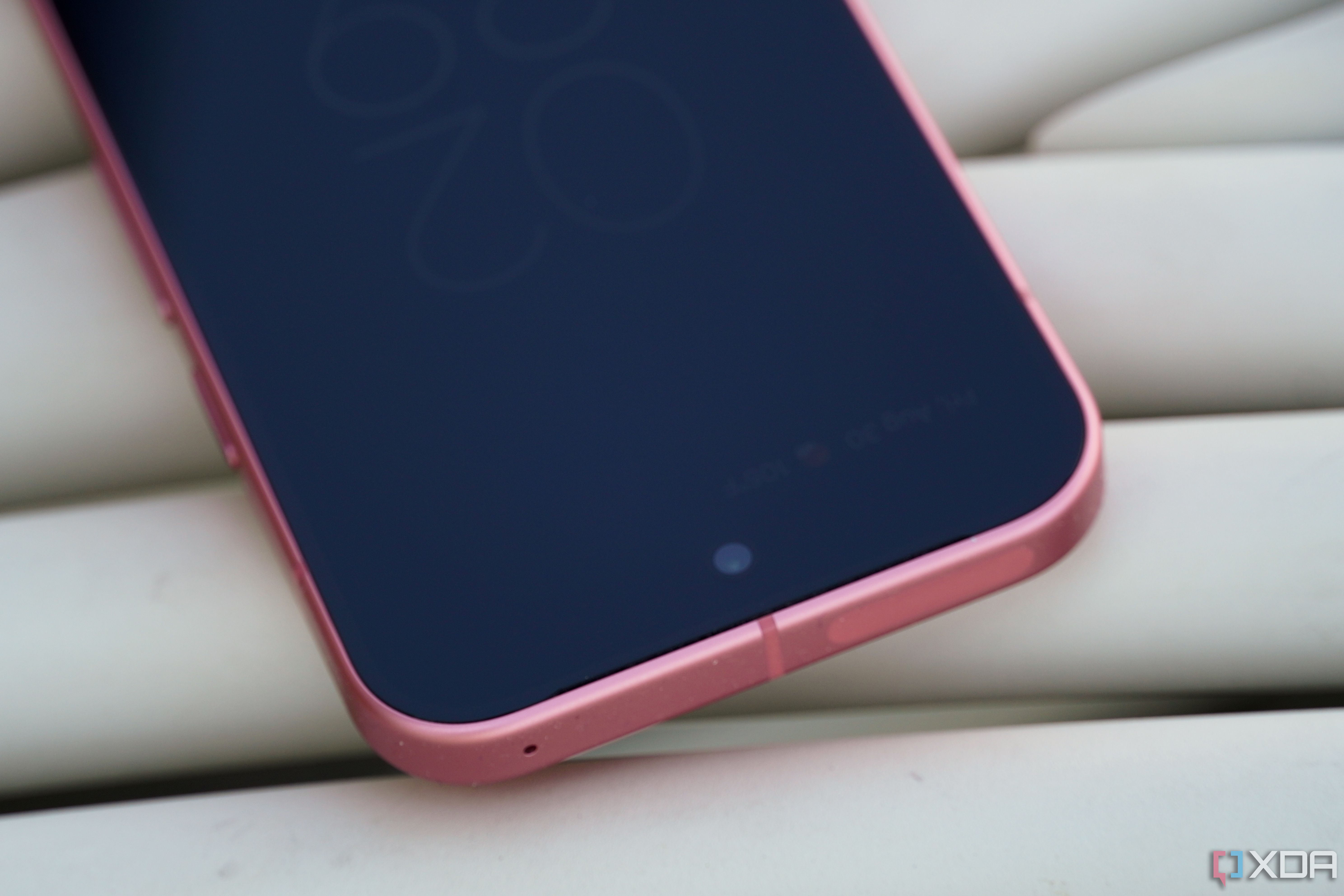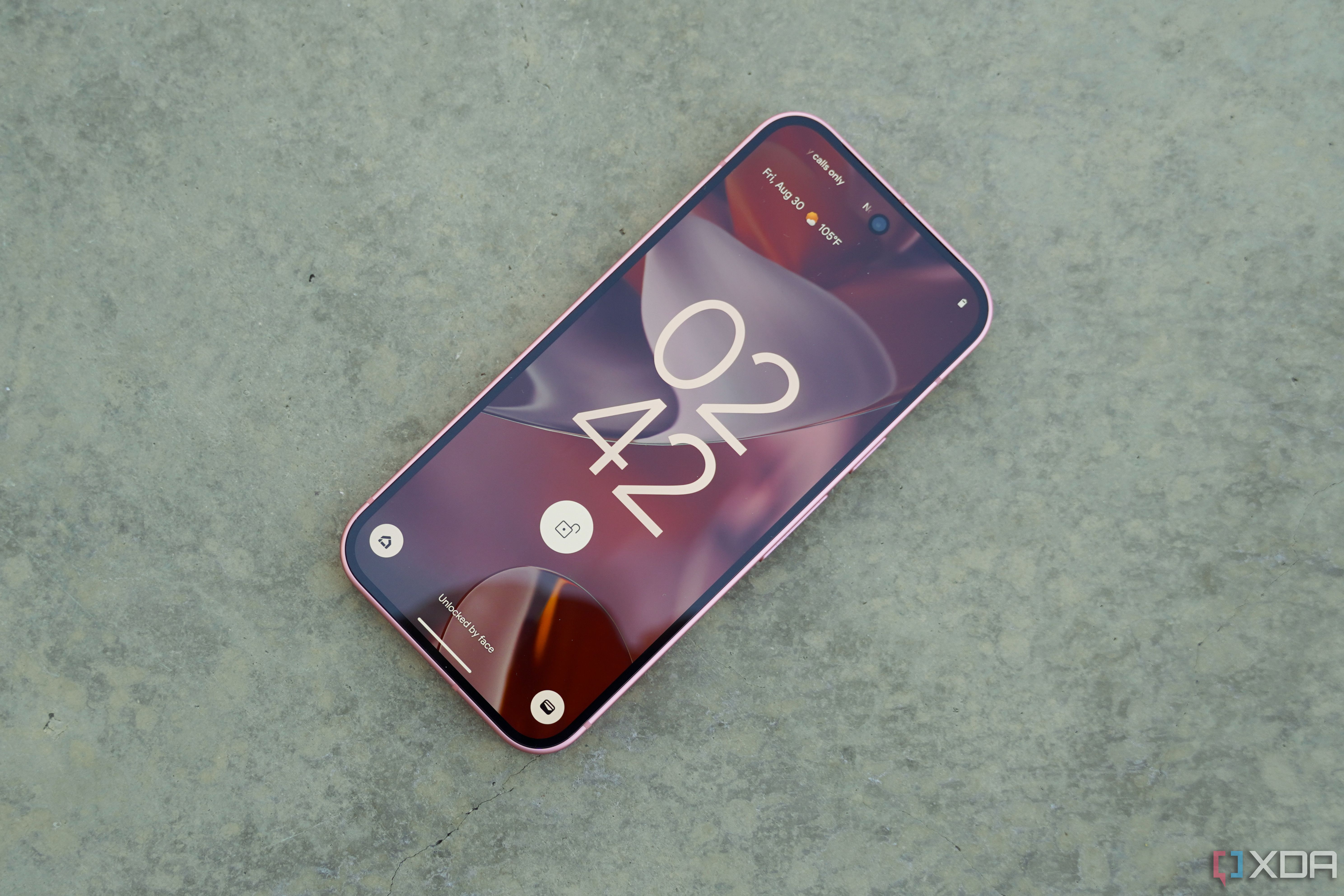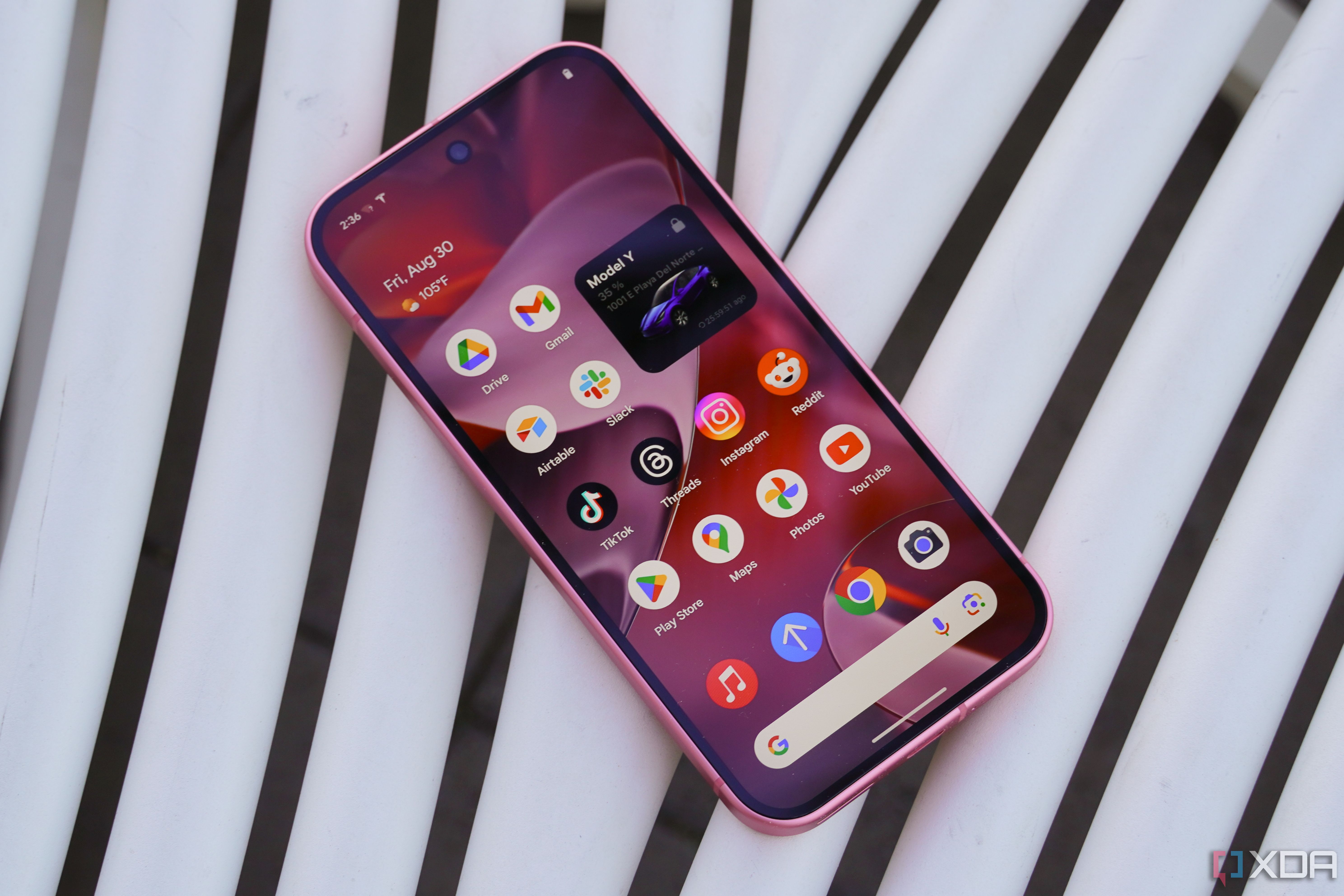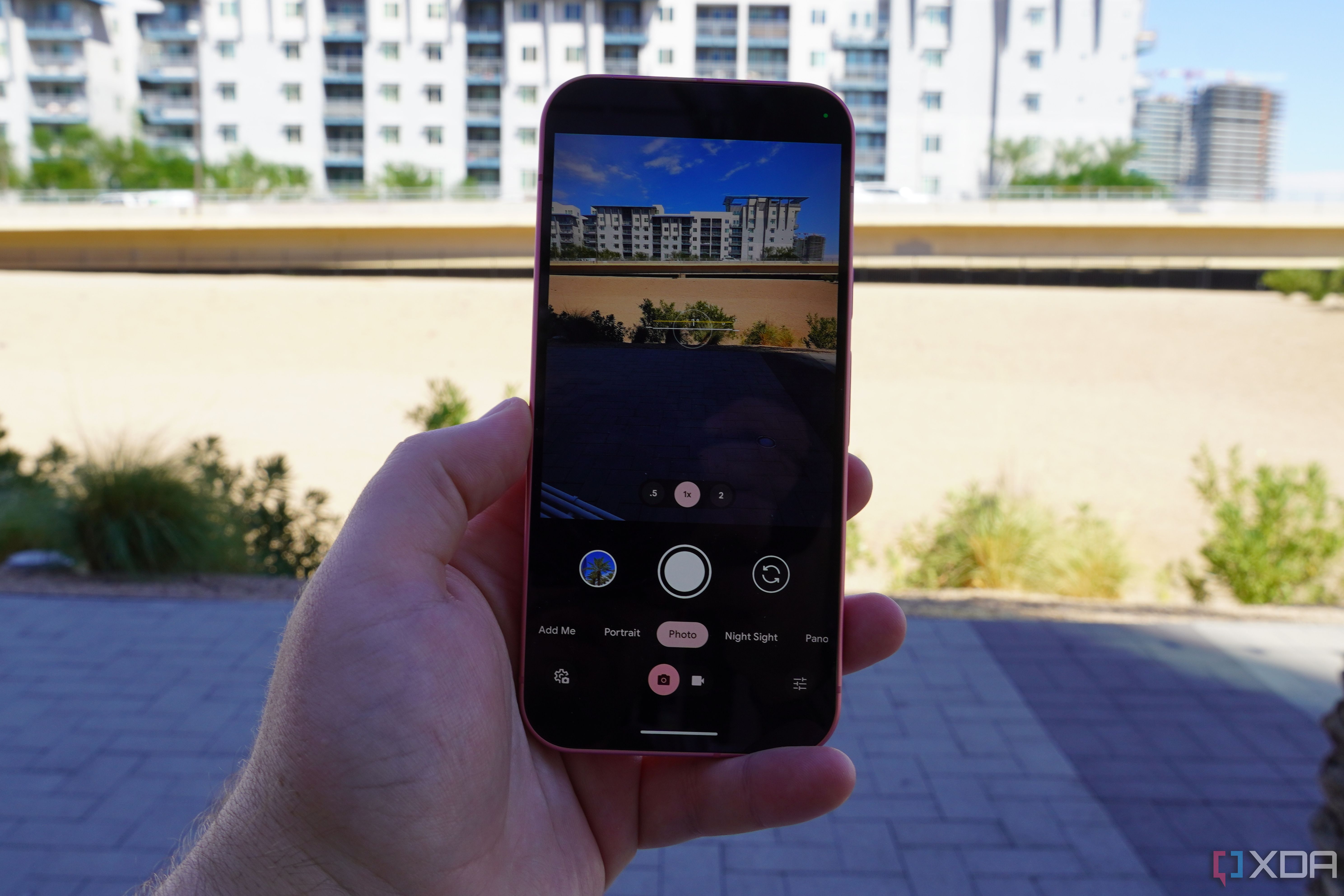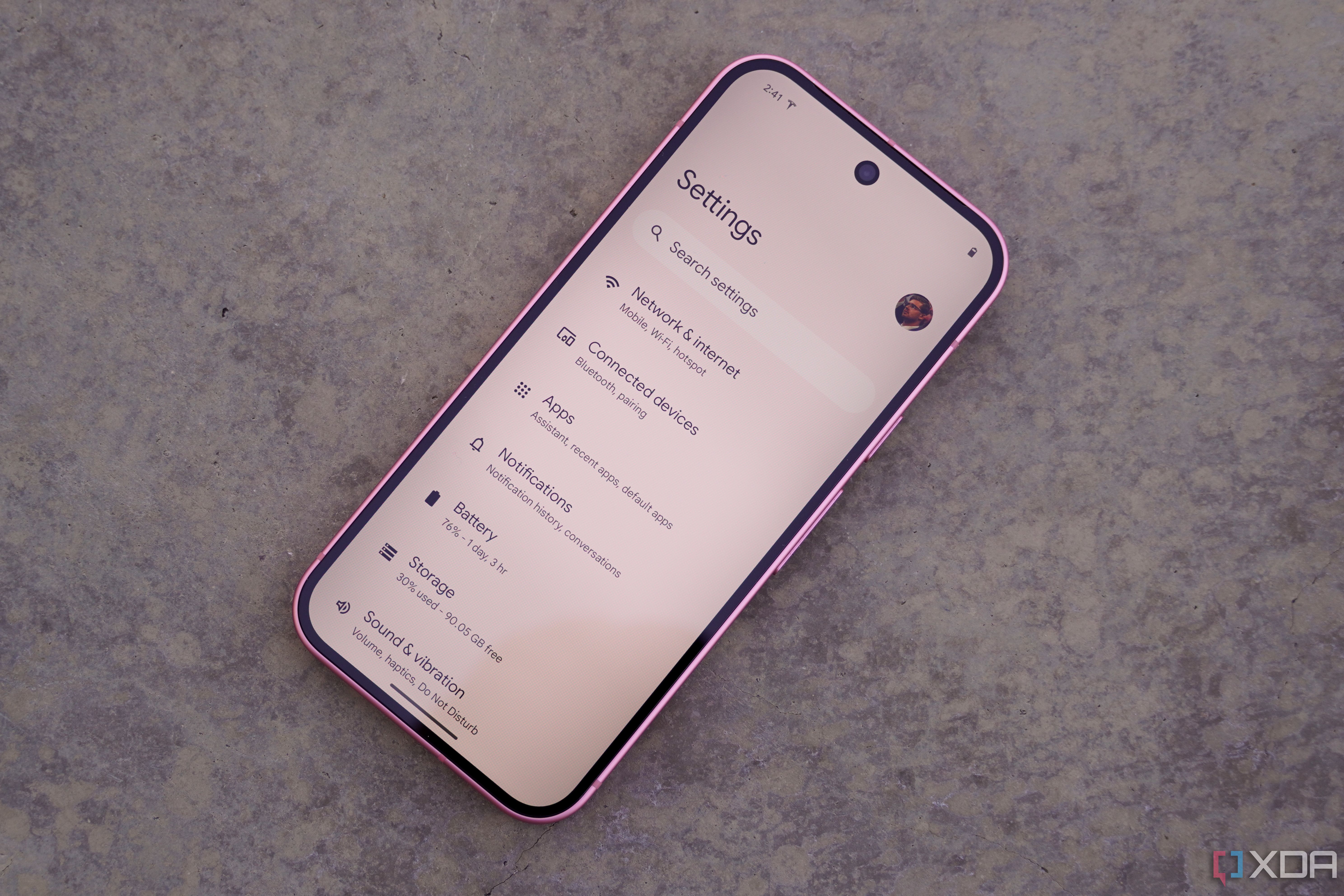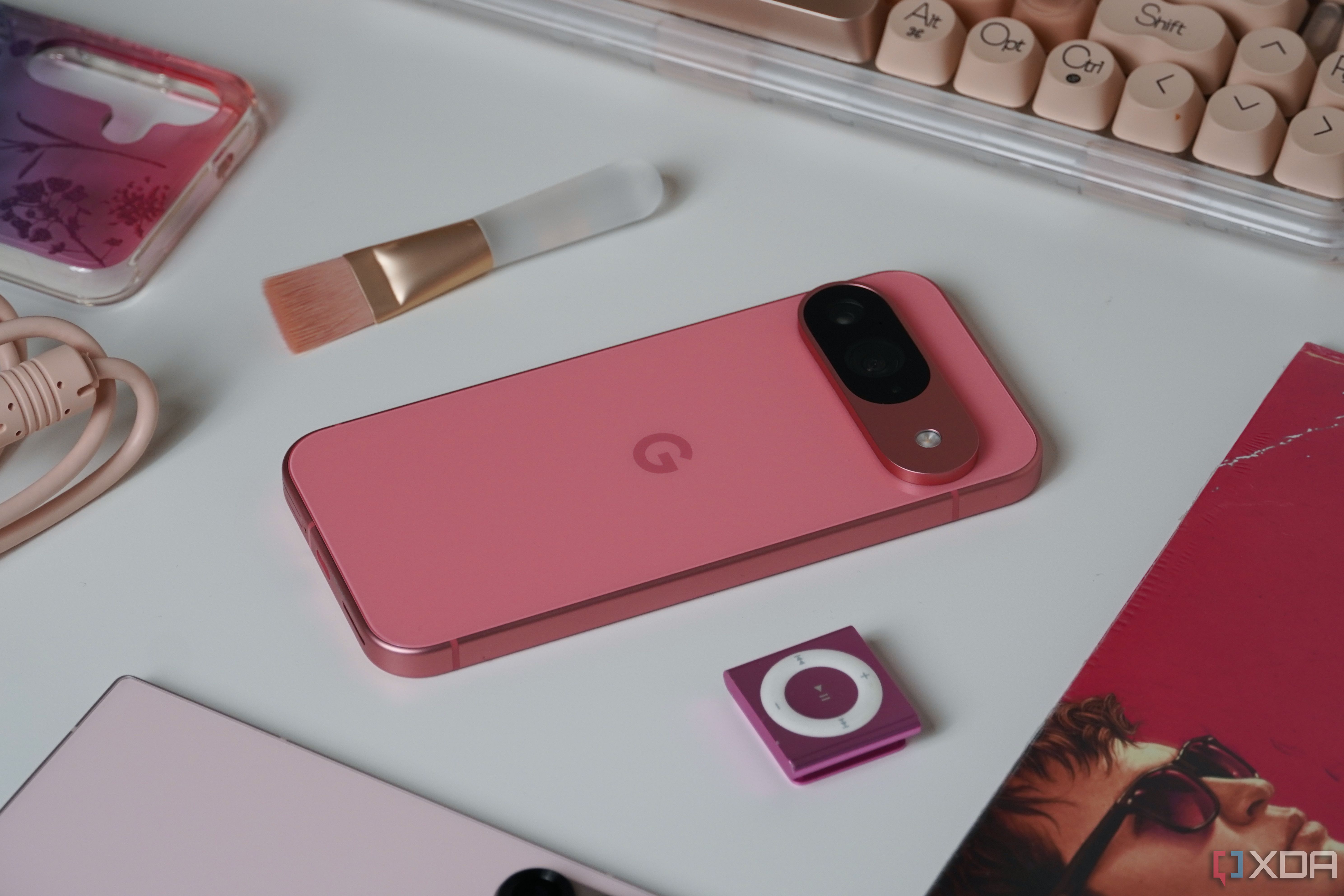The Google Pixel 9 is the company’s best compact flagship phone yet, but it also represents a decisive shift in direction for the Pixel product line. There was a time when the Google Pixel brand represented Google’s view of the perfect Android operating system, and ran what was considered “stock Android.” A lot has changed since the early days of the Nexus and Pixel, and the Pixel 9 wholly represents Google’s new vision for its smartphone lineup. Pixel phones were once the bloat-free Android devices, but now, they’re arguably more bloated with Google software than ever.
Google’s pitch isn’t that the Pixel 9 is the cheapest base-model flagship, or that it’s the most minimalist Android phone out there. Instead, Google is betting on the fact that you’ll actually want its Pixel-exclusive features that could be described as “bloat.” And the company just might be right about that. I’m not much of a Gemini user, but I’ve loved testing out the Pixel Screenshots and Pixel Studio apps. The camera, recorder, and phone apps are more examples of default Android apps Google made its own, and for the better.
The hardware still isn’t outstanding, as my colleague Ben Sin recounted in his Pixel 9 Pro XL review, but it isn’t a net-negative like it once was. The Tensor G4 processor doesn’t overheat or impact daily use of your phone much, the cameras are some of our favorites, and the redesigned chassis looks stunning and premium. Throw it all together, and the Pixel 9 is the phone I’d use if I didn’t want to go Pro.
About this review: I purchased a Google Pixel 9 for personal use. No company had any input in the contents of this article.

Great small flagship
Google Pixel 9
Is this peak Pixel hardware?
Google’s next lineup of flagship smartphones is here, and the Pixel 9 is the cheapest and smallest of the bunch. It starts at $800, which is a $100 increase over last year. For the extra money, you get a new Tensor G4 chipset, a redesigned chassis, and an upgraded rear camera system. There are some things you won’t get, like Android 15 and faster wireless charging speeds.
- Fresh design and excellent colors make the Pixel 9 feel more premium
- Tensor 9 isn’t winning benchmarks, but it’s firmly “good enough” for daily use
- Pixel-exclusive software features shine once again thanks to Pixel Screenshots and Pixel Studio
- I would’ve loved to see a telephoto zoom lens on this phone
- Ships with Android 14, and that means it may get six years full OS updates – not seven like the Pixel 8
- Charging speeds are still slow
Pricing, specs, and availability
Ahead of its usual schedule, Google revealed the Pixel 9 at a Made by Google event in mid-August, and it released later that month. The Google Pixel 9 retails for $800, which is $100 more than the Pixel 8 and $200 more than the Pixel 7 cost at launch. However, this pricing is in line with other base-model flagships from Apple and Samsung.
The base storage is 128GB, which is getting low in 2024, and the upgrade to 256GB costs an extra $100. You can get it from the major U.S. cellular carriers, from retailers like Best Buy and Amazon, or straight from the Google Store. If you act fast, you might be able to snag a few Pixel 9 deals, though the most aggressive promotions expired when the phone officially launched.
Design
It looks more like an iPhone, and that’s mostly for the better
Everyone thinks of software as being the key selling point of Google Pixel phones, and that’s absolutely true. However, Google is making a name for itself as the only big manufacturer that meaningfully changes the design of its phones each year. Apple, Samsung, and OnePlus might make a tweak or two to the design or materials yearly, but the big changes come at much longer intervals. By comparison, the Pixel 9 looks different from the Pixel 8, which is visually distinct from the Pixel 7, and so on.
Most people don’t upgrade their phones year in and year out, but Google’s effort here is still appreciated. This time around, the Pixel 9 ditches the fully-rounded edges of the Pixel 8 in favor of a chassis that mimics the iPhone 15. While the aluminum rails are flat now, the edges are still chamfered to seamlessly slope into the glass back and display of the Pixel 9 in a way that will be easy on your hands.
Google is making a name for itself as the only big manufacturer that meaningfully changes the design of its phones each year.
Overall, it looks like a Pixel. The camera bar is still there, though it doesn’t blend into the side rails like before and kind of looks like an Among Us impostor. I purchased the Peony colorway, and the pink aluminum is closer to a pastel shade while the glass back is closer to a bright salmon. I think Google did an excellent job with the colors this year, and the Wintergreen colorway might actually be my favorite.
I’m not a fan of having the power button and volume rockers on the same side, and they both feel a bit loose in their cavities, but this is nothing new for Pixel users. I do love that there’s a physical SIM card tray. It helps that the tray is clearly delineated, and you won’t mistake the SIM eject hole for a microphone. I’ve already had a lifetime of eSIM issues — this Pixel 9 wasn’t able to be activated on my existing AT&T line via eSIM — and hope Google sticks with physical SIM for the foreseeable future.
The dimensions of the Pixel 9 (152.8x72x8.5mm) and its 6.3-inch display make it larger than I’d like, but I’m well aware that the small phone is dead in 2024. As for the weight, it felt great in my hand coming from the hefty iPhone 15 Pro Max. With that being said, the Pixel 9 is certainly on the heavier side in its class — the Pixel 9 is 198 grams, which is a whopping 30 grams more than the Samsung Galaxy S24 (168.1 grams).
The Google Pixel 9 has an IP68 dust and water-resistance rating, and Gorilla Glass Victus 2 glass. I only had one bad drop during my review period, but managed to get a deep scratch on the Pixel 9’s front glass in the first few hours of ownership. It might be a good idea to invest in a great screen protector to prevent scratches.
Display
Smaller bezels make this OLED panel a bit easier on the eyes
Google slimmed down the display bezels to make the Pixel 9 screen pop more than last year’s model, but it’s still a similar Actua display under the hood. The screen now measures 6.3 inches as a result, and features a resolution of 1080 x 2424 at 422 pixels-per-inch, which is slightly less than the Pixel 8’s 428 PPI. It’s a good-looking OLED panel with a variable refresh rate between 60Hz and 120Hz.
The strange thing is that after turning the adaptive brightness off and setting the brightness manually, the Pixel 9 and its 2,700-nit peak brightness rating are outstanding.
For me, screen brightness is one of the most important parts of a smartphone. If I have to struggle to see what’s on my screen, either inside or outside, there’s a problem. Google seems to be shipping aggressive adaptive brightness software on the Pixel 9 series, because the XDA team noticed the screen dimming to uncomfortably-low levels on both our Pixel 9 and Pixel 9 Pro XL units. The strange thing is that after turning the adaptive brightness off and setting the brightness manually, the Pixel 9 and its 2,700-nit peak brightness rating are outstanding.
There’s a 10.5 MP, Dual PD selfie camera with autofocus in the front of the screen using the hole-punch style. Google doesn’t go full Dynamic Island here, but there are a few neat animations centered around the front-facing camera, like one that appears when you use face unlock to open your Pixel 9.
Cameras
Google’s computational photography still shines, but I still want more
I loved shooting photos with the Google Pixel 9, and it had nothing to do with any of the company’s AI features. Simply snapping photos using the Pixel’s default settings and computational photography profile produced impressive results. The main camera is a 50MP, Octa-PD wide camera with an f/1.68 aperture and a 1/1.31″ image sensor size. Then, there’s a secondary ultrawide camera that’s upgraded from the one on the Pixel 8. It’s now a 48MP, Quad-PD sensor with a 123° field of view.
It’s nice that the ultrawide sensor is upgraded on the Pixel 9, but I’d much rather have a periscope telephoto lens instead.
It’s nice that the ultrawide sensor is upgraded on the Pixel 9, but I’d much rather have a periscope telephoto lens instead. In fact, after getting used to the 5x optical zoom on the iPhone 15 Pro Max, I don’t think I would daily drive a phone without a telephoto lens. Google touts Super Res Zoom — an enhanced version of digital zoom that produces better results up to 8x — as the solution here. While Super Res Zoom is passable at 2x, anything above that would be better served by true optical zoom.
Here’s how photos of a baseball game turned out using the main camera (1x, left) and Super Res Zoom (2x, right):
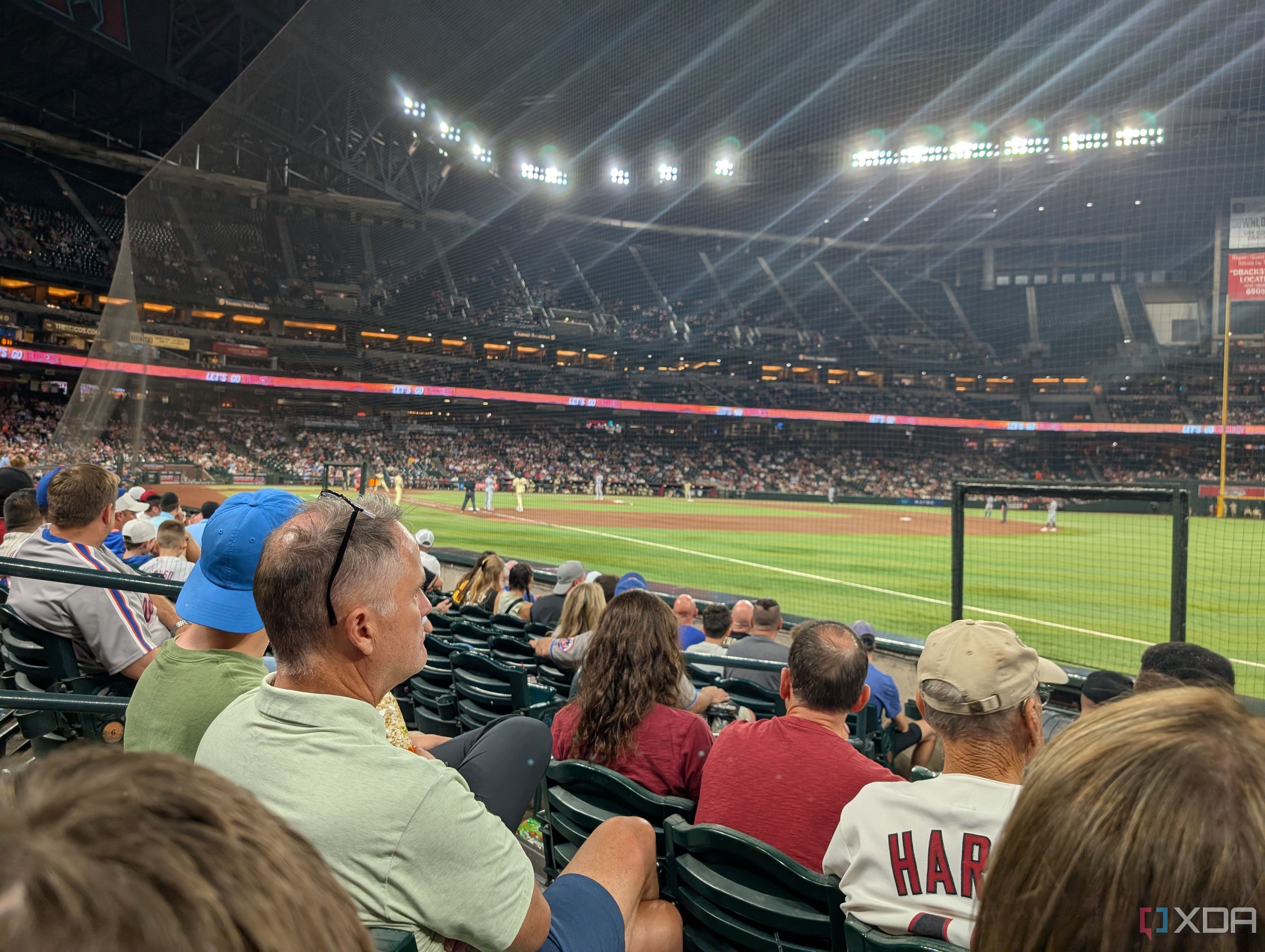
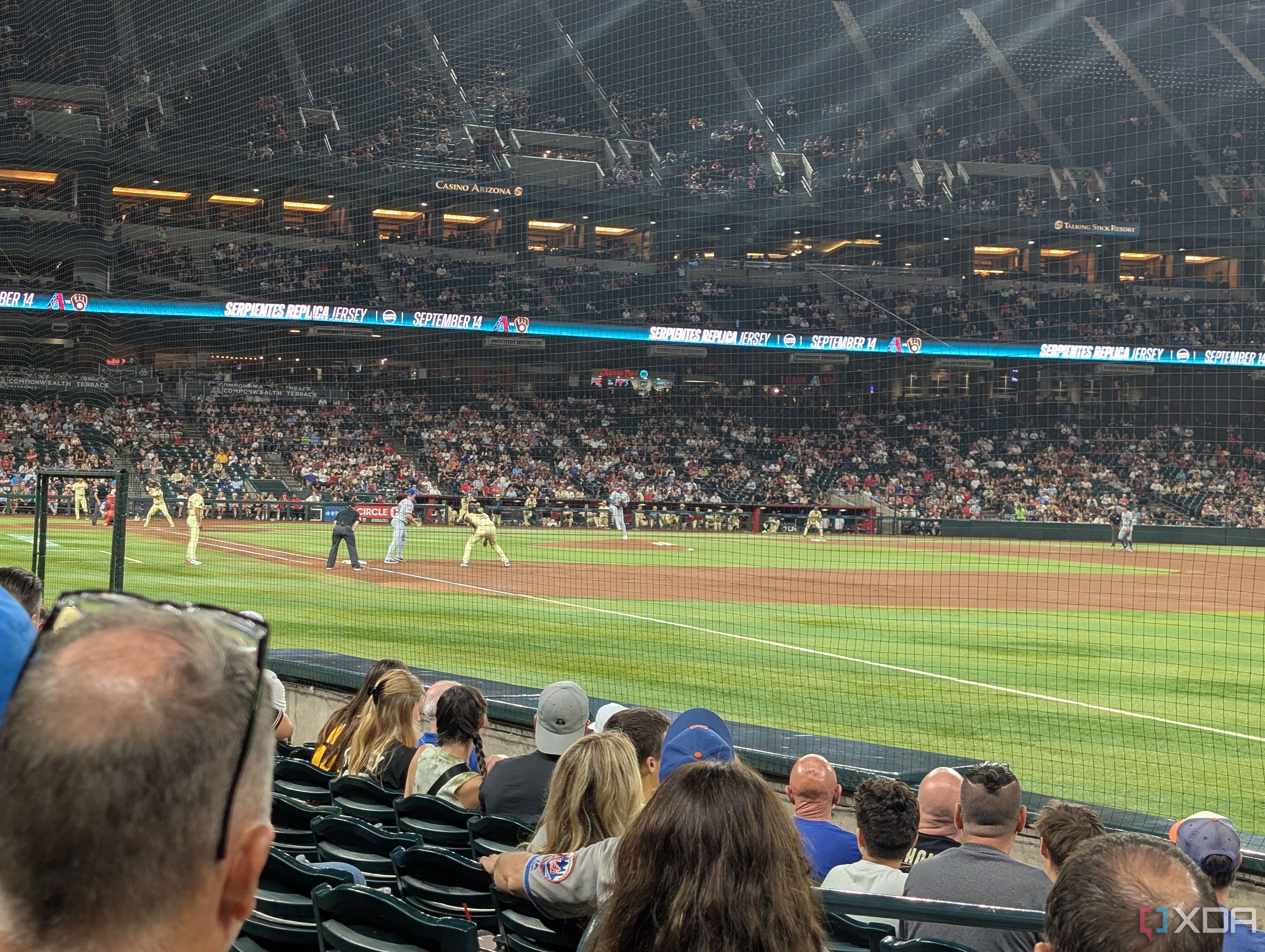
As for the pictures that come from the Pixel’s main sensor, they’re excellent. Colors are bright and vibrant without feeling unnatural, and I felt many of the pictures below were good representations of what I saw with my own eyes. With that being said, computational photography and post-processing are subjective. If you liked Apple and Samsung photos more than Pixel ones in the past, you’ll probably feel the same way about Pixel 9 photos.
Low-light performance was generally good, even if it was more hit or miss. In the gallery below, you’ll see that I put the Pixel 9 in a few challenging situations featuring dark settings mixed with bright lights. In many cases, Pixel 9 shots looked excellent, especially when using the Night Sight mode. However, there was one situation where no combination of settings or shooting modes could help the Pixel 9 take a good picture of my Waymo driverless taxi.
Pixel phones have been historically good with portrait and macro shots, and the Pixel 9 is no exception, as you can see in the gallery below:
Overall, I’ve tested the camera on the iPhone 15 and the Samsung Galaxy S24, which are the Pixel 9’s natural competitors until Apple and Samsung release new models shortly. I think the Pixel 9 produces better photos than both, but if you care about having great optical zoom, it might be worth the upgrade to the Pixel 9 Pro.
Performance and software
Google resolved old concerns while introducing new ones
The Google Pixel 9 still doesn’t come close to matching the level of raw performance offered by Apple and Samsung flagships, and this is often shown in benchmarks each year. However, benchmarks aren’t really indicative of how people will use their phones day-to-day. In that area, the Pixel 9 and its Tensor G4 processor are certainly “good enough.” There’s enough power for basic smartphone tasks and on-device AI processing, but the Qualcomm Snapdragon 8 Gen 3 and Apple A17 Pro are decidedly faster.
Rather than bore you with a bunch of benchmarks, I’m going to give you an anecdote that sums up my experience going from the iPhone 15 Pro Max to the Google Pixel 9. In the past, Google had serious problems with performance and overheating on Tensor processors, namely the Tensor G2. This problem is resolved with Tensor G4, which builds sightly on the Tensor G3’s improvements. I didn’t notice a major dip in reliability or performance on the Pixel 9 compared to the iPhone 15 Pro Max, but I did notice that the Pixel 9 ran significantly cooler.
During my week-plus review period alone, my iPhone 15 Pro Max completely shut down due to overheating on five different occasions. By comparison, the Pixel 9 didn’t overheat to the point I had to stop using it even once. I live in Phoenix, Arizona, for reference, where daily high temperatures are in the triple digits. If the Pixel 9 had an overheating problem, I’d know. But it’s my iPhone that surprisingly succumbs to these quirky performance limitations, not the Pixel.
For the first time in recent memory, the new Pixel isn’t shipping with the newest version of Android. The Google Pixel 9 comes with Android 14 in the box and won’t receive Android 15 until later. Shipping the Pixel 9 with Android 14 is an awful move by Google because it undermines the company’s seven-year full OS upgrade promise. While the Pixel 8 series will receive seven full OS upgrades, the Pixel 9 series is only guaranteed to receive six because it starts with the year-old Android 14.
That’s not to say that the Pixel 9 software experience is bad. In fact, Google added so many extras to the Pixel 9 software experience that it barely feels like Android 14. There’s the Pixel Studio and the Google Photos Reimagine feature, which both use AI to either generate new images or shake up existing ones.
Those don’t really entice me all that much, but the Pixel Screenshots feature is fantastic. It uses AI to analyze every screenshot you’ve taken and make them searchable using common-sense language. I wrote a full feature on Pixel Screenshots, and if you aren’t interested, there are multiple ways to turn them off.
Shipping the Pixel 9 with Android 14 is an awful move by Google because it undermines the company’s seven-year full OS upgrade promise.
The other big Pixel-exclusive feature is Add me, which lets you add someone into a photo using AI. It works well enough, to the point where group photos are believable, but still easy to identify as being AI-generated. It’s cool, and I could genuinely see it coming in handy as a way to get everyone in the photo. If anything, the drawback here is that the person being added in is usually oddly positioned compared to the rest. Here’s how my Add me test turned out:

Rounding out the software and performance section is battery life, which was passable on the Google Pixel 9. I usually got through a full day of use with heavy amounts of screen-on time, but needed to top off with more power occasionally. I tend to charge my phones while driving or sitting at my desk, and these small boosts helped my Pixel 9 last all day. Charging speed is still mediocre, supporting 45W wired and 15W wirelessly.
Should you buy the Google Pixel 9?
You should buy the Google Pixel 9 if :
- You have a Pixel 7 or older smartphone and are ready to upgrade to a new Pixel
- You want a base-model flagship with a fresh design, great cameras, and solid performance
- You need some of the Pixel-exclusive AI features on this phone
You should NOT buy the Google Pixel 9 if :
- You need a telephoto lens
- You want the absolute best performance
- You want to wait and see what Samsung and Apple have to offer
By moving up its release schedule this year, Google became the first to release its newest smartphones. That strategy paid off, because the Google Pixel 9 is the best base-model flagship you can buy right now. The real question is whether it has the chops to beat the iPhone 16 series, which is set for reveal in about a week. Then, there’s the Samsung Galaxy S25 series, which is expected to debut early next year. Only time will tell how the Pixel 9 ages in this smartphone release cycle, but for now, Google is on top.
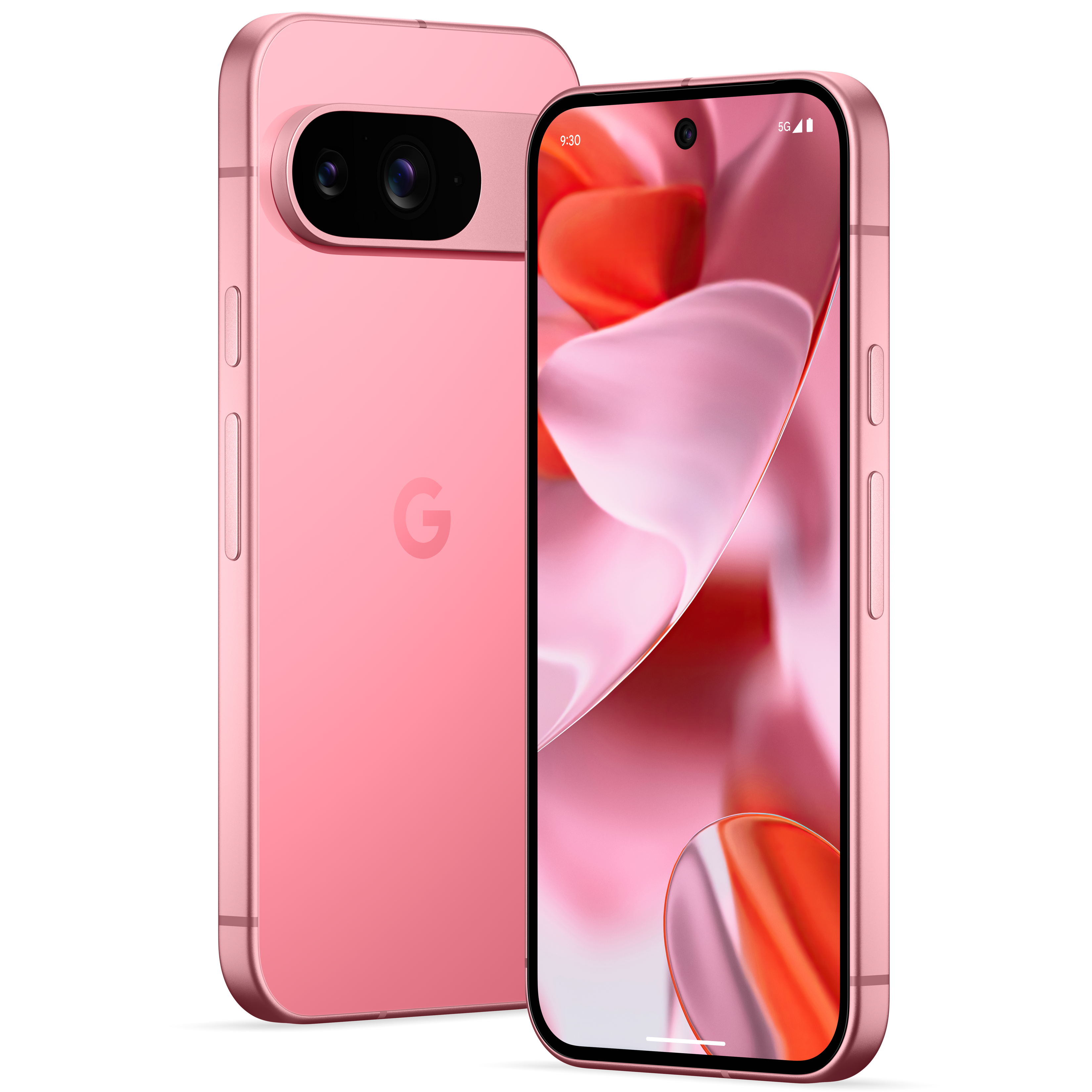
Great small flagship
Google Pixel 9
Is this peak Pixel hardware?
If you can live without a telephoto lens, the Pixel 9 is close enough to Pro that you probably don’t need to pay more for the Pixel 9 Pro or 9 Pro XL. It’s the best compact flagship right now, but we’ll have to see how Apple and Samsung counter soon.

